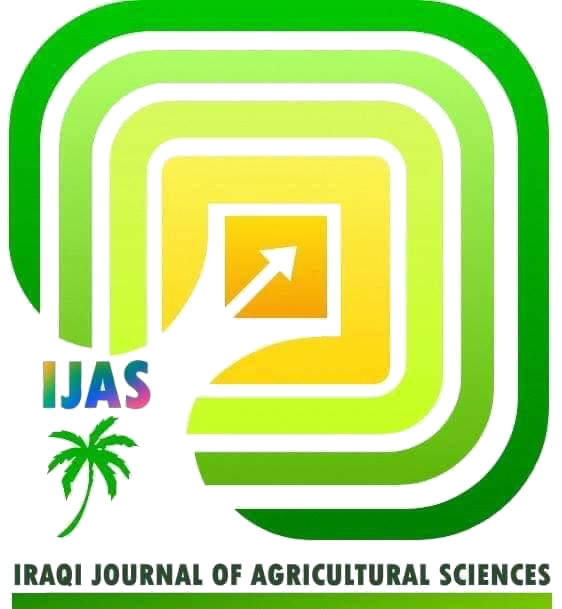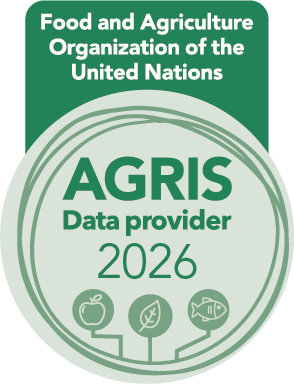EFFECT OF DIFFERENT DIETARY LEVELS OF FISH OIL ON COMMON CARP (Cyprinus carpio) GROWTH
DOI:
https://doi.org/10.36103/7dnmnh98Keywords:
feed conversion ratio, aquaculture, feed efficiency, body composition ,specific growth rateAbstract
This study aimed to investigate the impact of fish oil levels on the growth performance, feed efficiency, and body composition of common carp. The study divided 56 common carp into four treatment groups and fed diets containing different levels of fish oil over 56 days. Results showed significant differences in growth performance and feed efficiency between the treatments. The T3 (1.5% fish oil) and T4 (2% fish oil) groups showed the highest weight gain and most efficient feed conversion ratio, suggesting that 1.5% fish oil may support growth outcomes like those with 2% fish oil. Body composition analyses revealed favorable protein-to-fat ratios, suggesting improved nutrient retention and lean growth with reduced fish oil levels. These findings suggest that common carp can achieve satisfactory growth and feed efficiency with lower levels of fish oil, providing a more sustainable alternative to high-fish-oil diets.
References
1. Al-Noori, A. A., A. J. Abuelheni, and M.S.Al-Khshali. 2024. Effect of adding natural and nano zinc oxide to the dite on some growth parameters of Cyprinus carpio L. Iraqi Journal of Agricultural Sciences, 55(5):1612-1619. https://doi.org/10.36103/gz903610
2. Alkhshali, M.Sh. and H.A. Al- Hilalli, 2017. Effect of gradual salinity increasing on some stress parameters (glucose,totalprotein,lactate) in blood plasma of common carp Cyprinus carpio L. Iraqi Journal of Agricultural Sciences, 48(2): 573-581. https://doi.org/10.36103/ijas.v48i2.424
3. Alkafagy, I. H., A. Y. Al-Shukry ,and M. S. Al-Khshali. 2020. Relationship of the leptin hormone gene with some of the growth characteristics of common carp Cyprinus carpio l. Plant archives, 20(1): 1225-1230.
4. Alkinani,Z.S.S. and T.S.M. Al-Obaidi, 2020. Effect of using different percentages of oyster mushroom (PLEUROTUS OSTREATUS) cultivation waste on Cyprinus carpio diets in some growth and blood characteristics. Plant archives, 20(1): 2280-2284.
5. Al-Saadi, A. S. T., and T.S.M Al-Obaidi. 2023.Substituting Fishmeal and and Fish by-Product(Internal Organs) for Imported Animal Protein.IOP Conference Series:Earth and Environmental Science,2023,1262(7),072025. https://doi.org/10.1088/1755 1315/1262/7/072025
6. Al-Khshali, M.S. 2019. Effect of different ratio of addition of NaCl to the diets on some growth traits in grass carp ctenopharyngodon idella. Plant Archives, 19: 908–911.
7. Bell, J. G., and R.Waagbo. 2008. Safe and nutritious aquaculture feed. Aquaculture Nutrition, 14(4), 401-412. http://www.springerlink.com/content/w31w65466606m218/
8. Cho, C. Y., and D. P. Bureau 2001. A review of diet formulation strategies and feeding systems to reduce excretory and feed wastes in aquaculture. Aquaculture Research, 32(S1), 349-360.
DOI:10.1046/j.1355-557x.2001.00027.x
9. Dalsgaard, J., I. Lund, R. Thorarinsdottir, A. Drengstig, K.Arvonen, and Pedersen, P. B. 2013.Farming different species in RAS in Nordic countries: Current status and future perspectives. Aquacultural Engineering, 53, 2-13. DOI:10.1016/j.aquaeng.2012.11.008
10. Francis, G., , H. P. Makkar and K. Becker. 2001. Antinutritional factors present in plant-derived alternative fish feed ingredients and their effects in fish. Aquaculture, 199(3-4), 197-227. https://doi.org/10.1016/S0044-8486(01)00526-9
11. Gatlin, D. M. and R. W. Hardy. 2008. Nutritional and health benefits of using trace minerals in fish diets. Journal of Animal Science, 86(14), 2769-2780.
12. Glencross, B. D. and, M. Bermudes . 2017. Challenges of oil replacement in fish diets. Fish Nutrition Research, 55(2), 123-141. DOI:10.1577/A05-006.1
13. Hardy, R. W. 2010. Utilization of plant proteins in fish diets: Effects on growth, nutrient utilization, and nutrient load. Aquaculture Research, 41(6), 763-772. DOI:10.1111/j.1365-2109.2009.02349.x
14. Hardy, R. W. and F. T. Barrows. 2002. Diet formulation and manufacture. Fish Nutrition, 2, 505-600. DOI:10.1016/B978-012319652-1/50010-0
15. Kaushik, S. J. and I. Seiliez.2010. Protein and energy nutrition in fish: An overview. Aquaculture Nutrition, 16(2), 141-149. https://doi.org/10.1111/j.1365-2095.2009.00695.x
16. Martínez-Llorente, C., and M. S. Izquierdo 2018. Replacement of fish oil with plant-based oils in fish nutrition. Aquaculture International, 26(3), 359-372. https://doi.org/10.1007/s10499-017-0224-2
17. Montero, D., L. Robaina, M. J. Caballero, R. Ginés. and M. S Izquierdo. 2005.Growth, feed utilization, and flesh quality of European sea bass (Dicentrarchus labrax) fed diets containing vegetable oils: A time-course study on the effect of a re-feeding period with a 100% fish oil diet. Aquaculture, 248(1-4), 121-134. DOI: 10.1016/j.aquaculture.2005.03.003
18. National Research Council (NRC). 2011. Nutrient Requirements of Fish and Shrimp. National Academies Press.
19. Ng, W. K. and N. Romano. 2013. A review of the nutrition and feeding management of farmed tilapia throughout the culture cycle. Reviews in Aquaculture, 5(4), 220-254.
20. Smith, J. A. and P. Wilson. 2020. The role of dietary oils in aquaculture nutrition. Journal of Aquatic Science, 45(3), 123-135.
21. Tacon, A. G. J. and M. Metian. 2008.Global overview on the use of fish meal and fish oil in industrially compounded aquafeeds: Trends and prospects. Aquaculture, 285(1-4), 146-158. DOI:10.1016/j.aquaculture.2008.08.015
22. Tacon, A. G., M. Metian, G. M. Turchini, and S. S. De Silva, 2009. Responsible aquaculture and trophic level implications to global fish supply. Reviews in fisheries science, 18(1), 94-105. https://doi.org/10.1080/10641260903325680
23. Tidwell, J. H., and G. L. Allan, 2001. Fish as food: aquaculture's contribution. EMBO reports.
https://doi.org/10.1093/embo-reports/kve236
24. Thilsted, S. H., A. Thorne-Lyman, P. Webb, J. R. Bogard, R. Subasinghe, M. J., Phillips, and E. H. Allison, 2016. Sustaining healthy diets: The role of capture fisheries and aquaculture for improving nutrition in the post-2015 era. Food Policy, 61, 126-131. https://doi.org/10.1016/j.foodpol.2016.02.005
25. Yu, J., and Q. Han, 2020. Food security of mariculture in China: Evolution, future potential and policy. Marine Policy, 115, 103892. https://doi.org/10.1016/j.marpol.2020.103892
Downloads
Published
Issue
Section
License
Copyright (c) 2025 IRAQI JOURNAL OF AGRICULTURAL SCIENCES

This work is licensed under a Creative Commons Attribution-NonCommercial 4.0 International License.

2.jpg)


